Visiting wineries and wine tastings in Chianti, Italy!
Yay, it’s time to talk about the wine tastings we did in Chianti, Italy! As I mentioned in my last post, we stayed for a little over a week in an agriturismo in the Chianti Classico region, and we mostly just chilled and explored the local area. One of the biggest draws of the local area is the abundance of wineries and all the different wine tastings you can do. And while we aren’t huge drinkers, we so enjoyed this part of Tuscany!
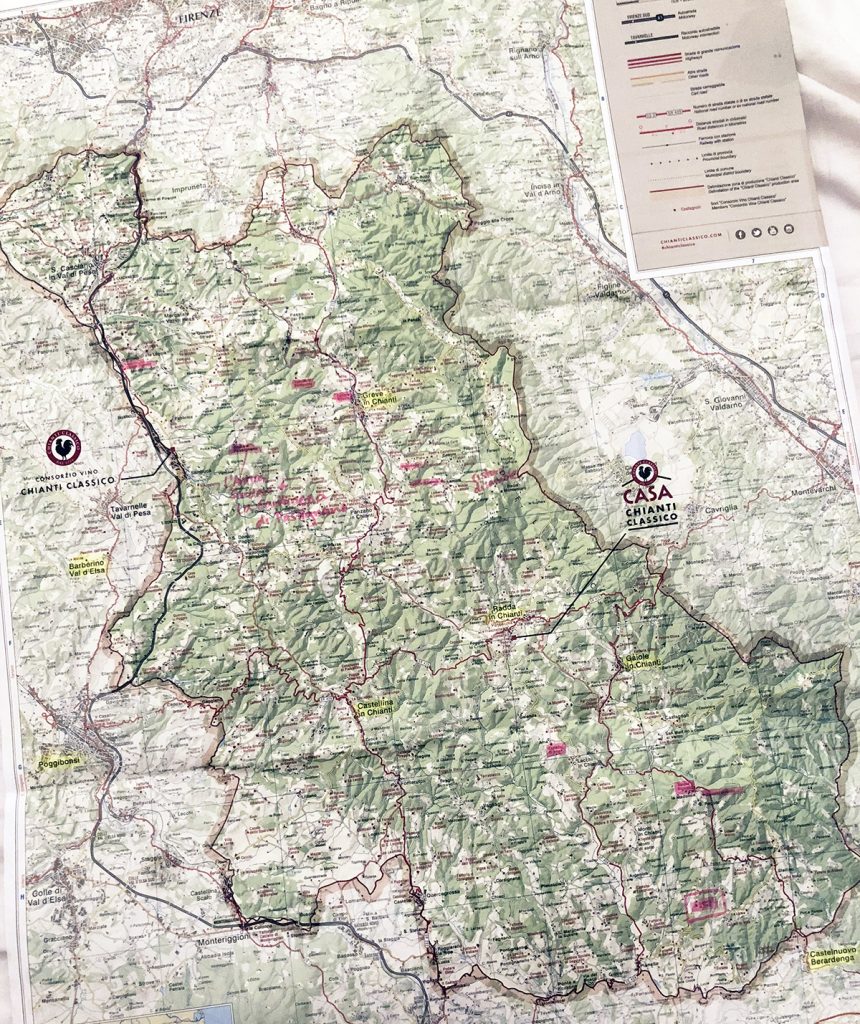
So what is a Chianti Classico?
I am not the most knowledgeable about wines. But, being on these tours at the wineries helped me to learn so much about the wine making process, and made me more excited to be more discerning about the wines I drink when at home. So, let’s talk a little bit about Chianti Classico.
So, a Chianti Classico is an official designation that is bestowed on wines that are made in a specific region between Florence and Siena, Italy. There is a Consortium that sets the rules and regulations for wineries to have the Chianti Classico label, and only those wines that have been approved get to have the official seal – which is a black rooster on a white background. The wines also get the distinction of being DOCG (Denominazione di Origine Controllata e Garantita), indicating a guarantee of quality by the government. Note that these wines are not the same as wines that are just called ‘Chianti’.
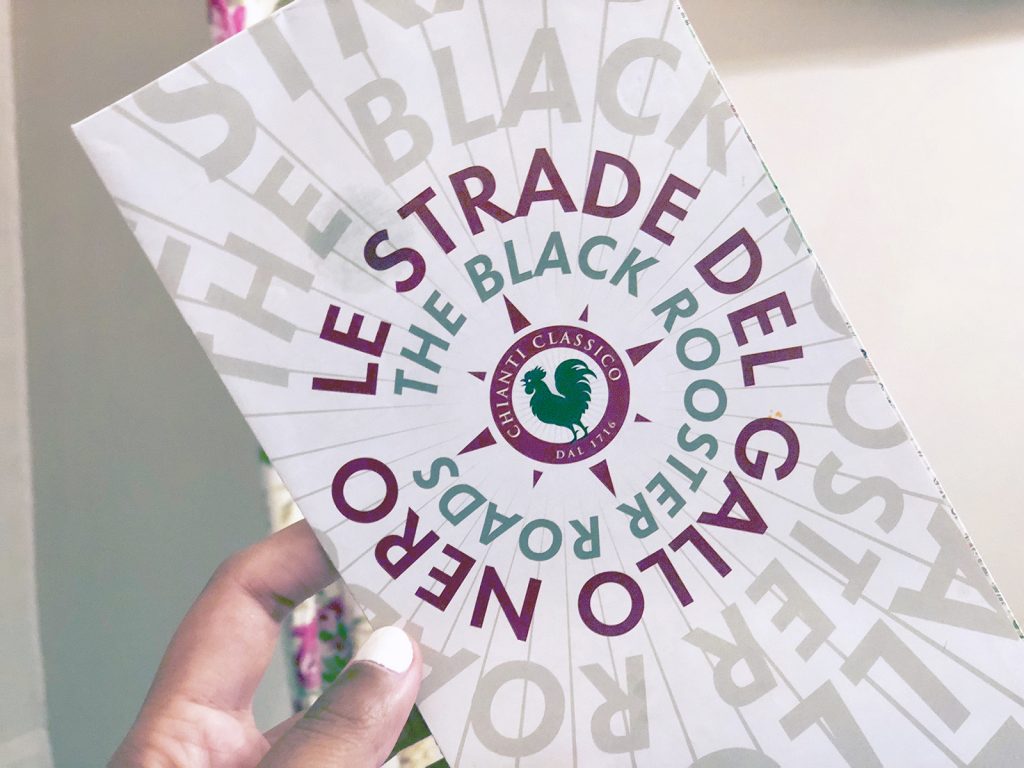
Here are the regulations that a wine must meet in order to get the Chianti Classico label:
- The blend must be made up of at least 80% sangiovese red grapes (native to the region) and can be 20% of other red grapes
- The wine must be oak aged for at least 7 months
- The wine must be made from a single estate (but not necessarily a single vineyard)
- A bunch of other requirements around altitude, alcohol level, salt level, etc.
- Chianti Classico Riserva is a fancier version of this wine, and it has the same requirements, but uses the best grapes from the harvest and it must be aged for a minimum of 24 months
- Chianti Classico Gran Selezione is the fanciest version of this wine, and it also has the same requirements and uses the very, very best grapes from the harvest, but it must be aged for 30 months (this distinction only started in 2014)
How is Chianti Classico made?
This was a really fun part of the tours at the wineries! While we get the basics, neither Damian or I really knew how wines are made on a deeper level. Especially given the level of geeky science involved in what is truly a craft and art, we loved learning about it.
Step 1: Planting the vines. Of course, at the most elementary level, wine comes from grapes. The wineries plant their grapes at different altitudes and in different soil types (more heavily with sand, dirt, rock, etc.), which influence their quality and taste. The average lifespan for a grape vine is ~45-50 years, but you can’t start harvesting grapes with enough quality for wine until ~5 years in. Starting around the 25 year mark the grape production decreases on the vines, but the quality of the grapes goes up. Thus, older vines are often used to make the Riserva and Gran Selezione Chianti Classico wines, with smaller productions but higher quality.
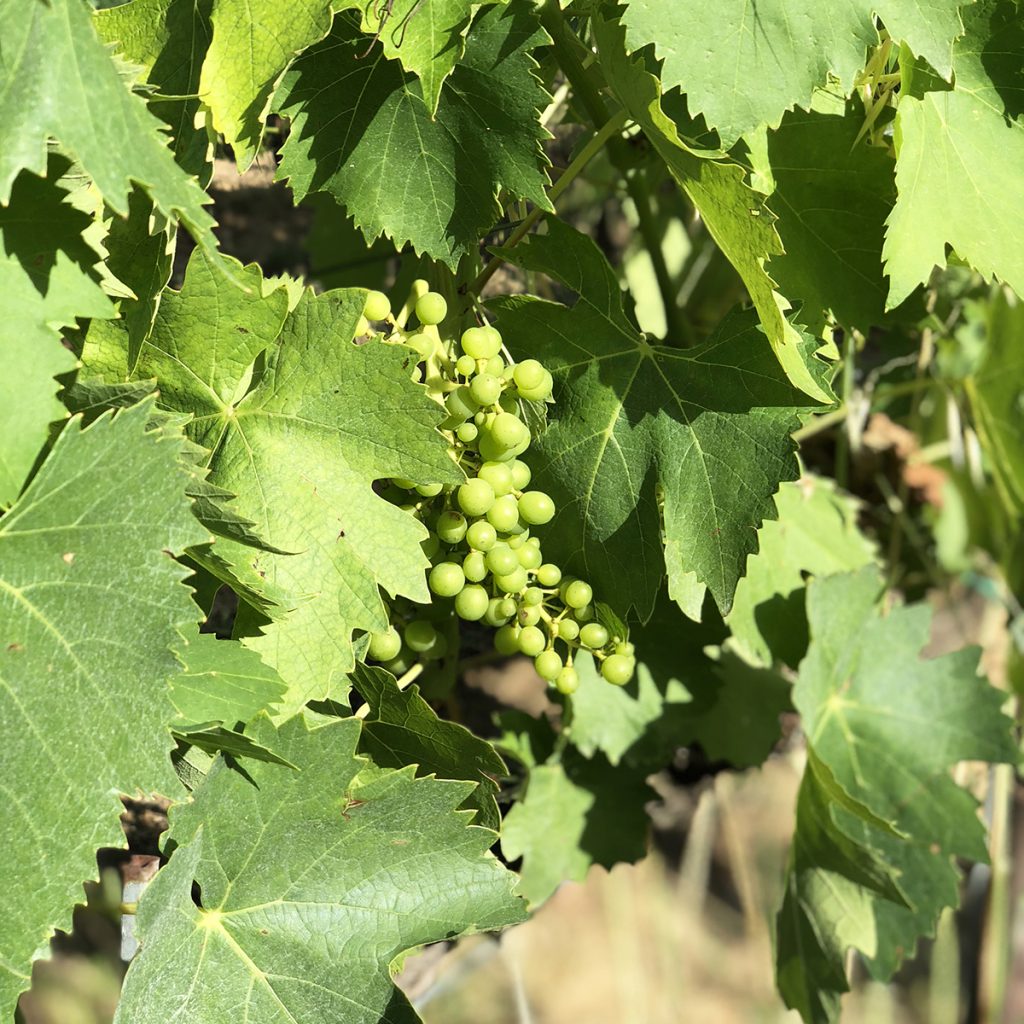
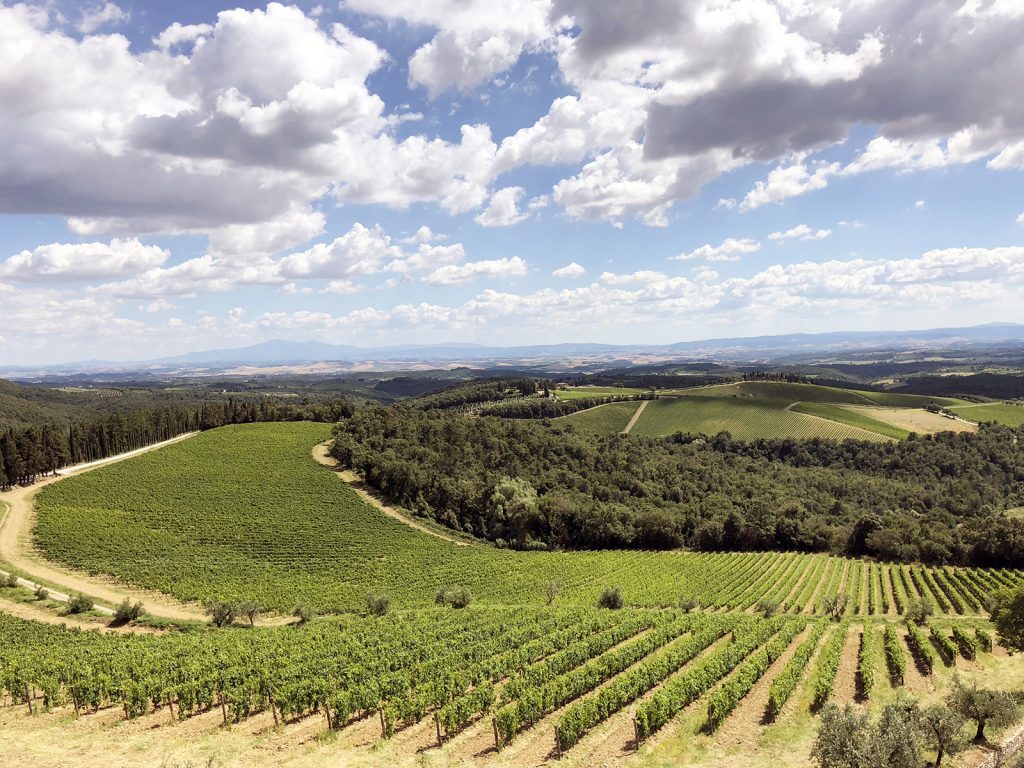
Step 2: Harvesting the grapes. The grape harvest is done in the fall, usually sometime in September and October. It takes about four weeks and the exact dates depend on how the weather and conditions were during the season. Organic wineries do all the picking and sorting by hand, so they hire seasonal workers (often college students who are studying agriculture, viticulture, etc.) to help.
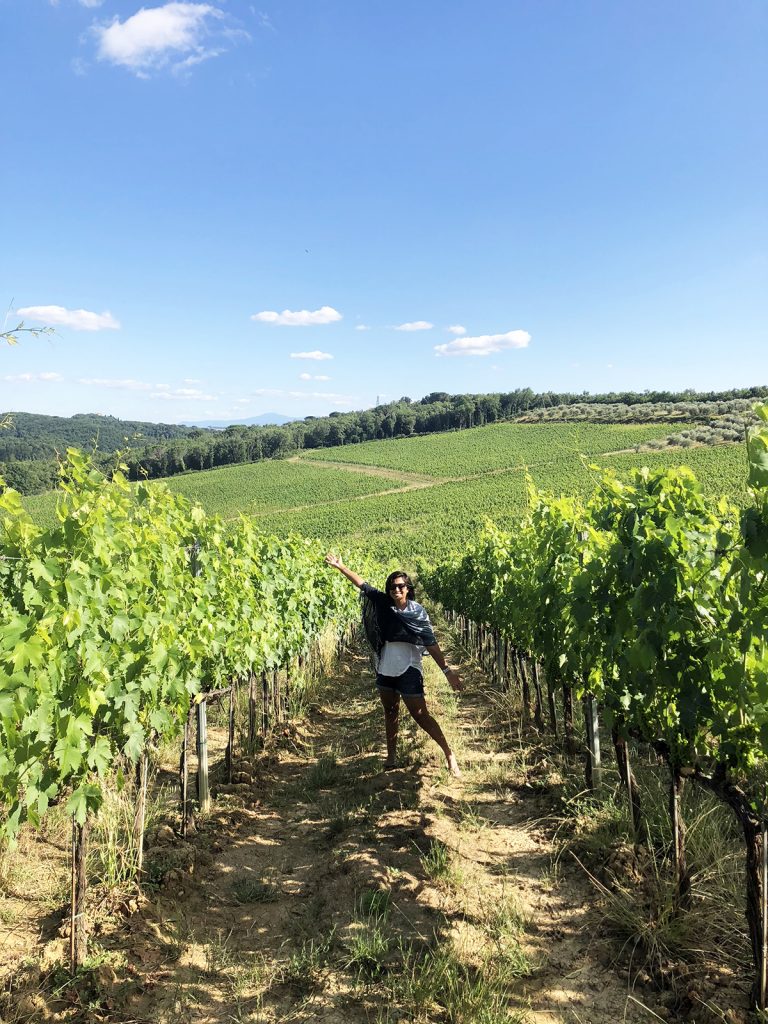
Step 3: Crushing the grapes. The grapes are separated from the stems and leaves and crushed to release the juices. At this stage there is additional sorting of the grapes, by picking off the best individual grapes from bunches to be used in the Riserva and Gran Selezione wines. Since Chianti Classico wines are red wines, the crushed grapes are left with their skins for the color, flavor and tannings. I still would love to see and do one of those grape crushings by feet that you see on TV shows, but most crushing is done by machine these days.
Step 4: Fermenting and filtering the wine. The wine spends a number of months (the exact number varies) in a large vat to get the fermentation process going – this is where the sugars in the wine turn into alcohol. At this point it is ok for the wines to be in steel vats instead of barrels because it is a shorter process than the full aging. Once the conversion has happened the wine is filtered to remove the skins and any other debris.
Step 5: Aging the wine. Now the wine is put into oak barrels, which basically come in two sizes – ginormous and regular size (these are my distinctions, they held about 3,000 liters and 250 liters respectively). The larger ones are made of Slovenian wood and the smaller ones of French wood, and both are super expensive! This is where the wines develop their full taste by absorbing flavors from the inside of the oak. The key to this aging process is that the barrels must remain at a relatively cool temperature (around 70 degrees Celsius) and at a high humidity level.
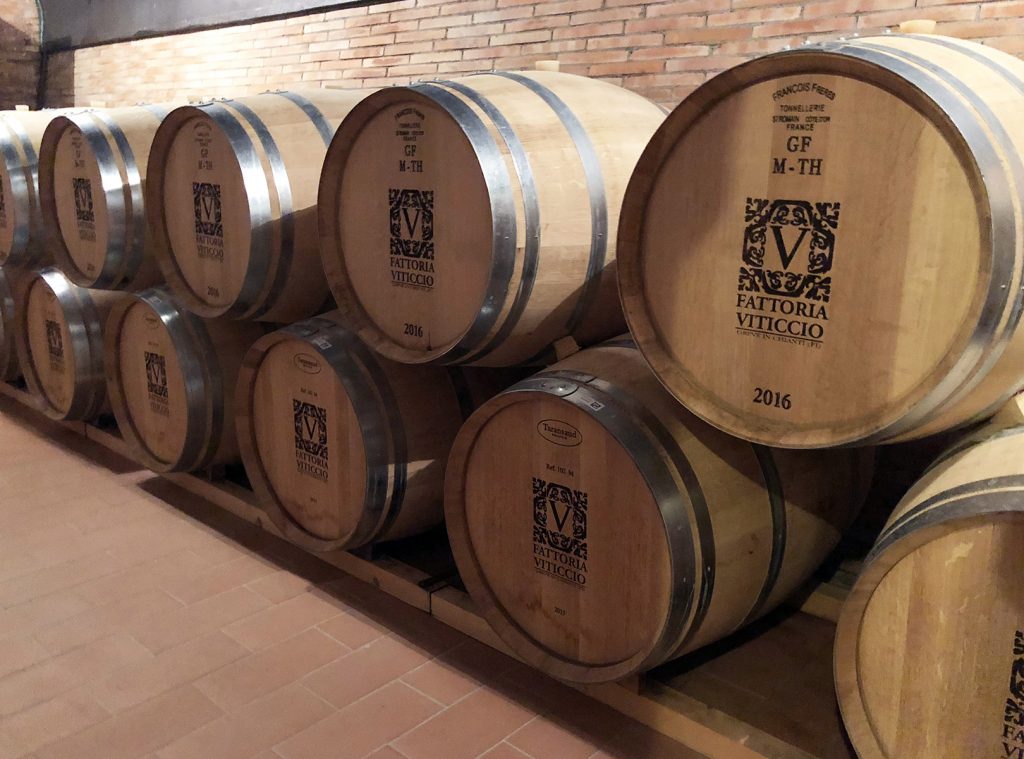
Step 7: Bottling the wine and we are done, woohoo! And then once the aging process is complete the bottling begins! Often times there will be another filtration process to ensure there aren’t any remnants in the wine before it is bottled. Then the wineries use machines to fill up the bottles and put the label (with the DOCG rooster!) on it. By the way, I learned that you can’t really age wine in bottles forever and have it get better and better. After maybe 30 years or so the wine starts going bad and it isn’t drinkable.
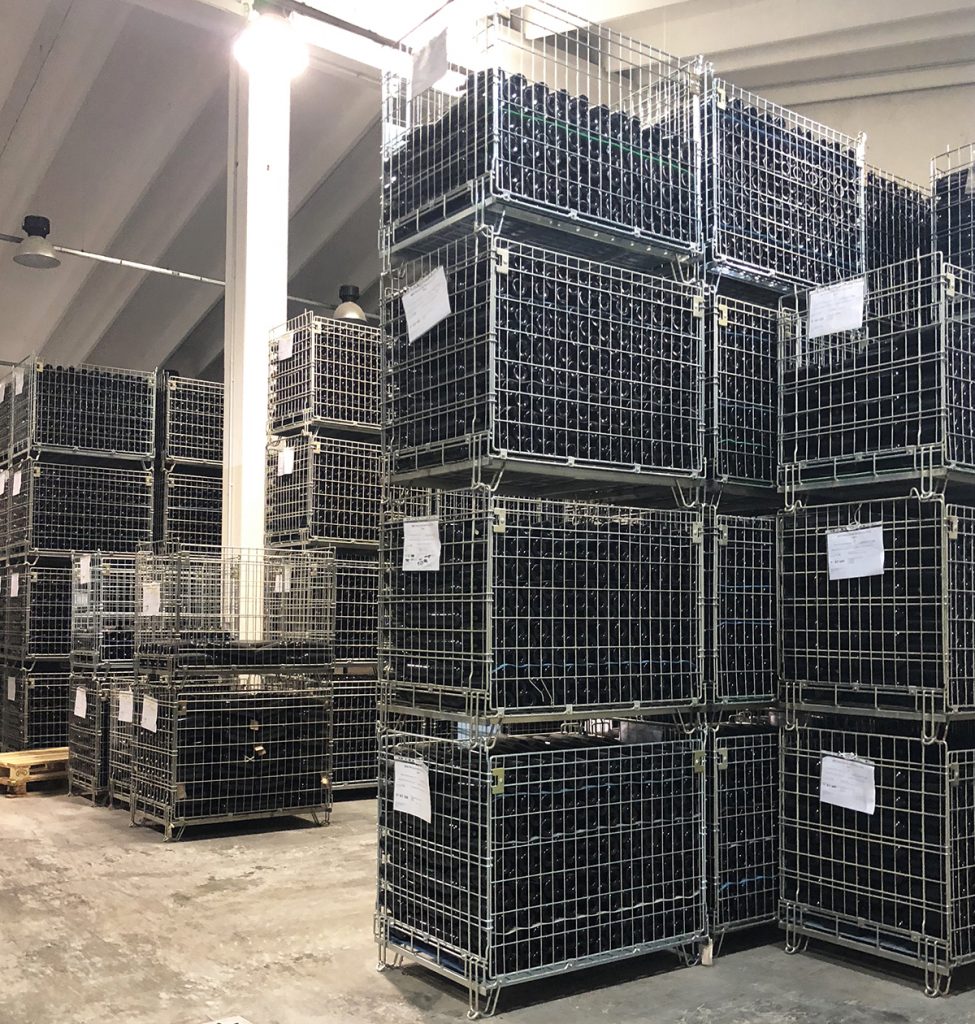
Ok, ok, enough. Tell me about the wine tasting!
We did four tastings at wineries in the Chianti Classico region (and one in the Brunello region, but I will cover that in another post) and tasted 23 different wines! It was a blast and I feel like I really refined what I like more and like less.
To not bury the lede, give me all the Chianti Classico Riserva! Pretty consistently across the board this was the wine I liked the best, even better than the fancier Gran Selezione varieties.
Here are the top wines I would recommend out of the ones we tasted here:
- Viticcio Chianti Classico Riserva 2013 ($30): This was my favorite Riserva I tried throughout.
- Poggio Landi Brunello di Montalcino 2012 ($42): This was really good with a mild taste.
- Tenuta Fertuna Rosé di Toscana 2017: So delicious! Another rosé that I will be seeking out when we get home.
Castello di Bossi wine tasting
This was the wine tasting we did at the agriturismo we stayed at. I would say this one was less like a tour and more a straight tasting, in case you are ever thinking of heading there yourself! Castello di Bossi has multiple vineyards and brands, and makes over 2.5 million bottles a year. We didn’t have to pay for this tasting since we were staying on the property.
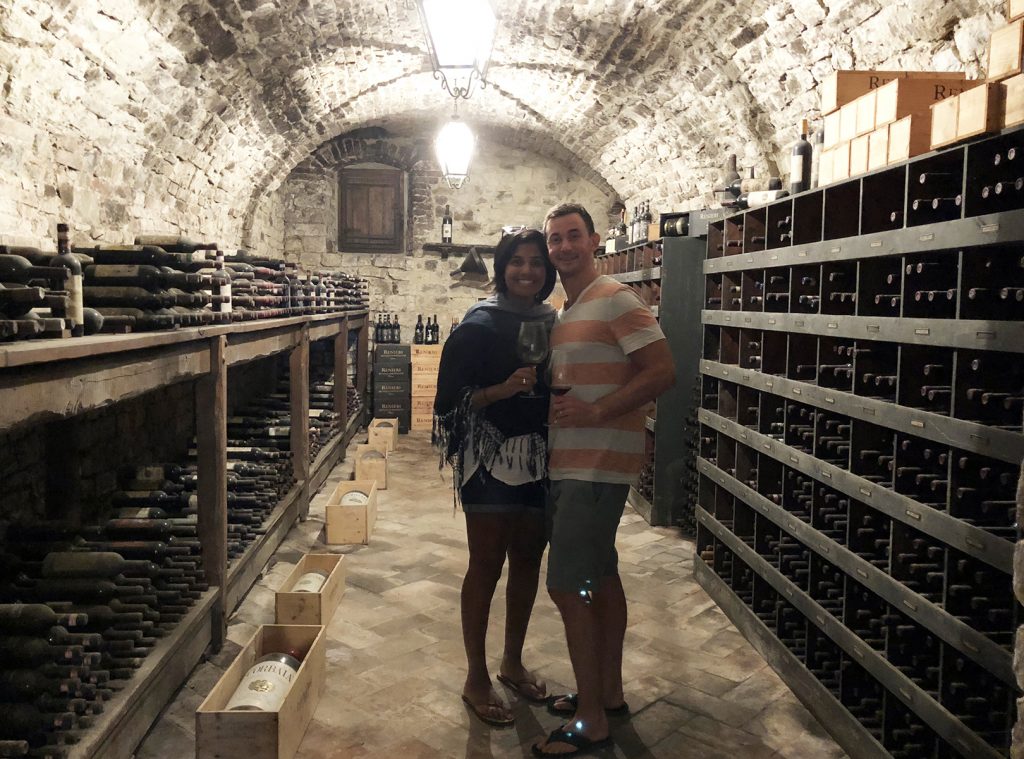
Here are the wines we tasted and my thoughts (and prices from the Vivino app, if I could find them).
- Vento Teso Viognier Toscana ($20): This was a nice white wine, with a pretty mild taste. I would buy this one on my own!
- Castello di Bossi Chianti Classico 2015 ($19): I didn’t love this one. It was a little sour/bitter and I wasn’t a huge fan of the aftertaste.
- Tempo Morellino di Scansano ($15): This one was a bit fuller and I liked it a lot!
- Renieri Rosso di Montalcino 2014 ($20): I also really enjoyed this one – it was full but without too much of a sour/bitter taste
Fattorio Viticcio
Fattorio Viticcio was my favorite of the wineries we visited in the region! The whole experience was about 90 minutes and was just so well set up and done. We first got a tour of the vineyards and all the facilities (aging room, etc.) and then a beautiful tasting outside, with cheese and meats to go along with the wines.
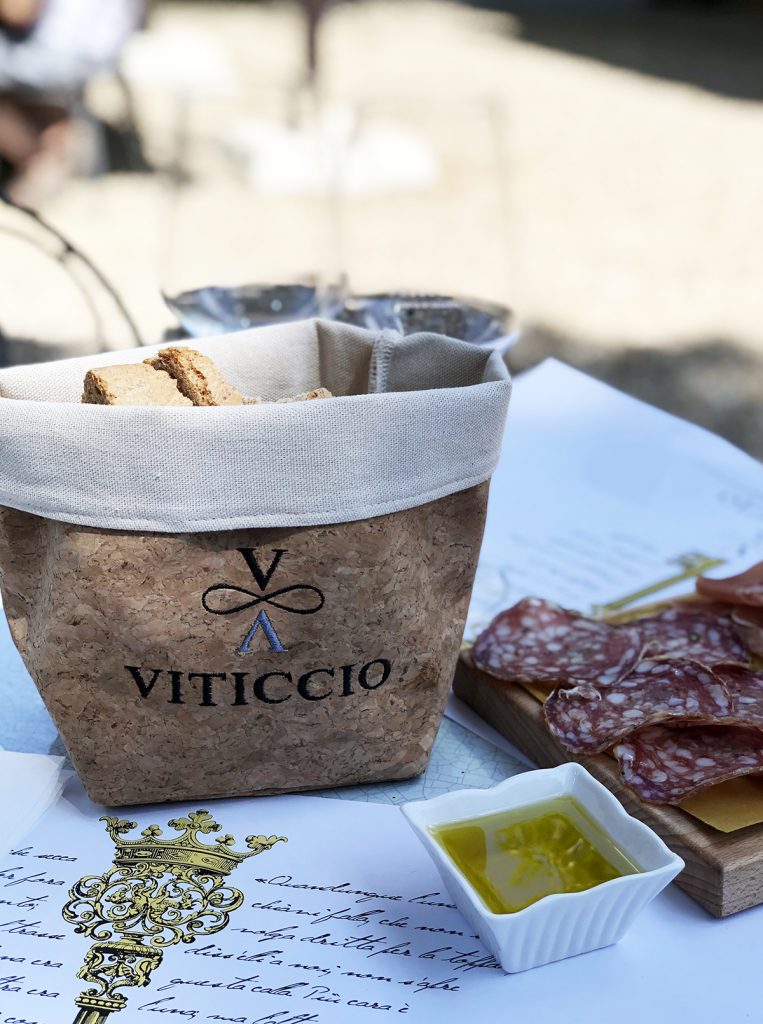
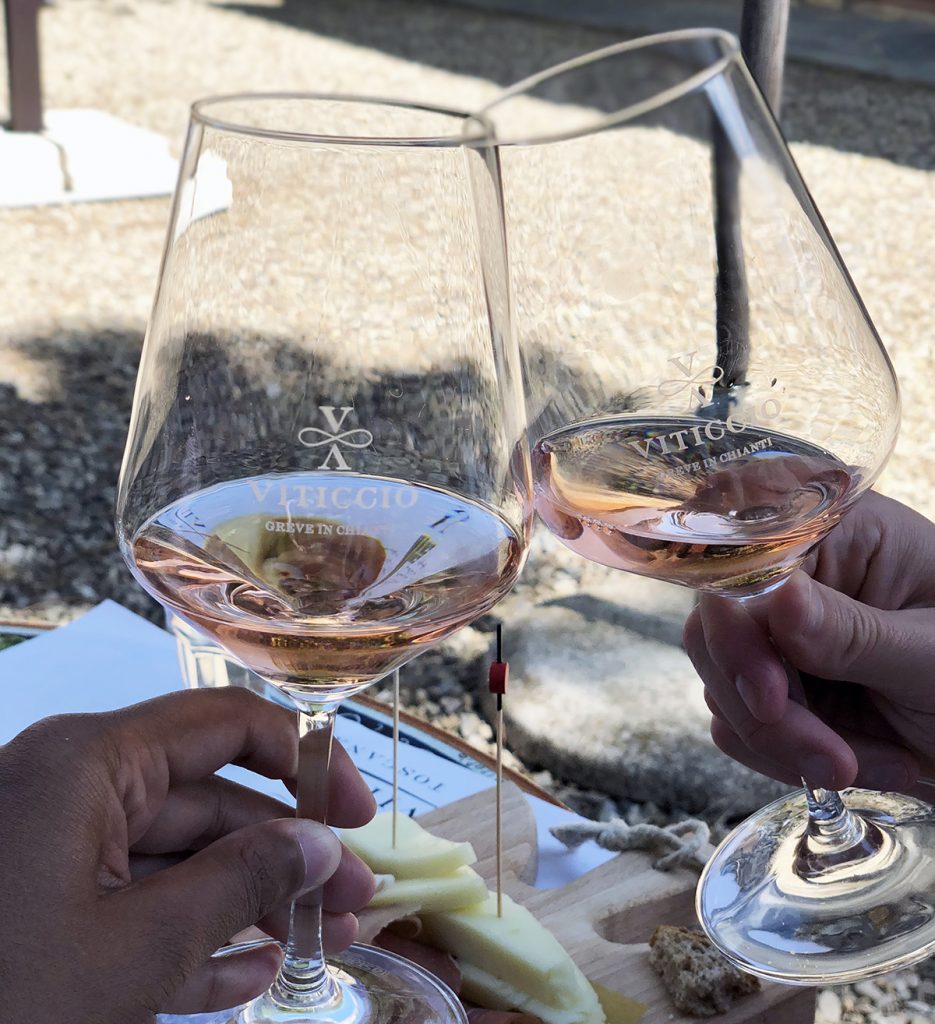
The grounds of this winery were just absolutely stunning. There is an agriturismo on site as well and from what we could see it seemed like a fabulous place to stay!
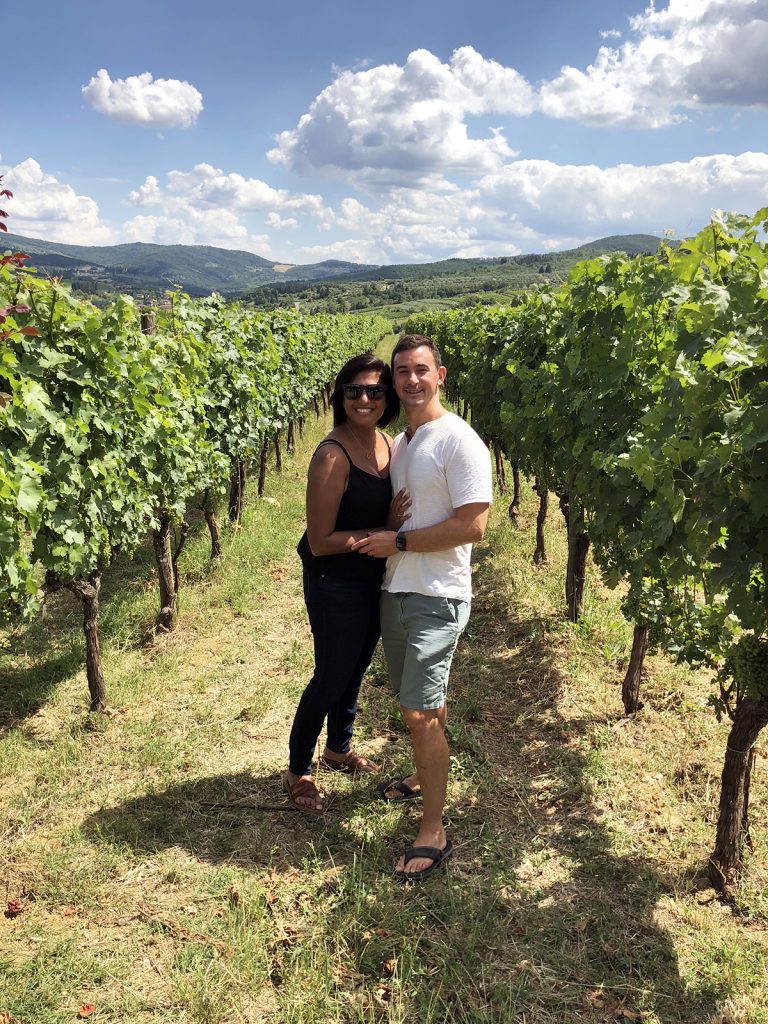
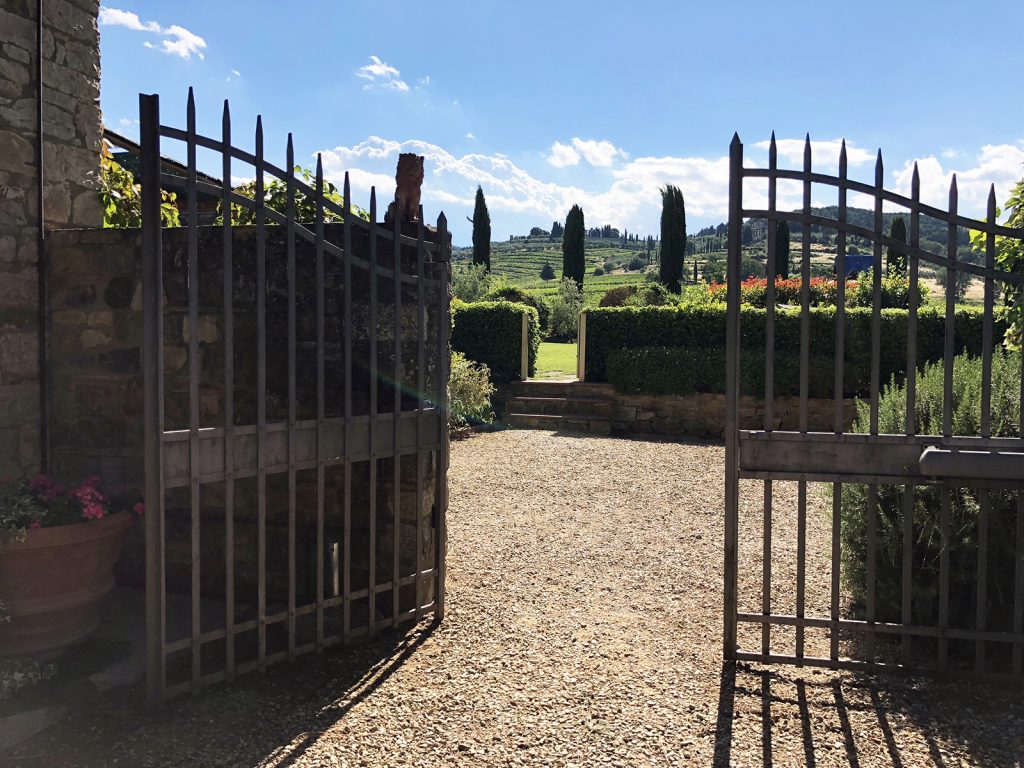
It was on this tour where we actually learned the most about wine making and the different variables that change the taste and character of the wine. This tour and tasting was 25 Euros per person. Here is what we tried and my thoughts:
- Viticcio Rosata Toscana: This was an awesome rosé! I will definitely be seeking it out when we get back. Also, I learned rosé can be made from red grapes – they just aren’t left with their skins for very long so there isn’t that much color.
- Viticcio Chianti Classico 2014 ($18): Same old Chianti Classico review (I wasn’t into it), though this was the best out of all the ones we tried.
- Viticcio Chianti Classico Riserva 2013 ($30): This was my favorite one here as well! And probably my favorite Riserva I tried throughout.
- Viticcio Prunaio Chianti Classico Gran Selezione 2013 ($20): I was meh on this. If served it I would happily drink it, but I wouldn’t search for a bottle of it. (and yes, I don’t understand wine pricing either)
Barone Ricasoli
This was the vineyard that is part of the castle we explored (Castello di Brolio). If you do a tour of the castle you get a tasting of one of their wines, and then I had another one of their wines from the wineries when we had lunch in their gorgeous restaurant.
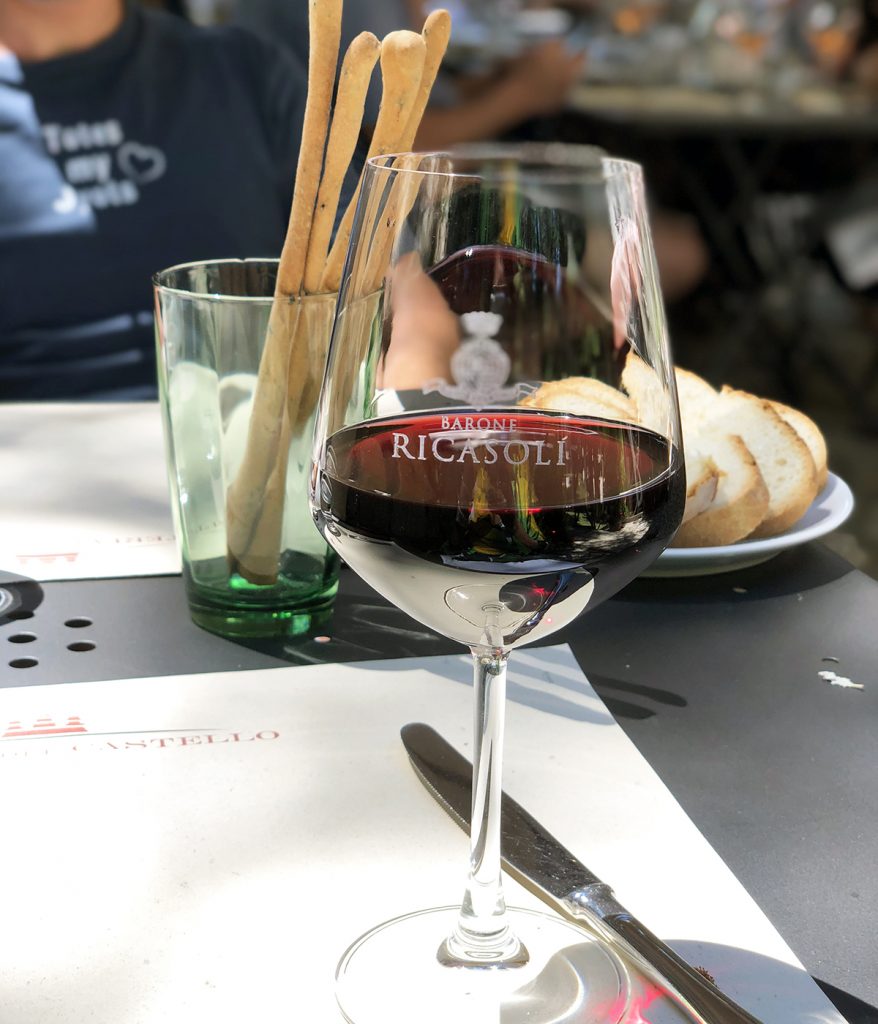
Here’s what I tried and what I thought:
- Brolio Chianti Classico 2015 ($22): This one was ok, same story as the other Chianti Classico wines.
- Brolio Bettino Chianti Classico 2015: Ditto here, but I liked it better than the previous one!
- Brolio Chianti Classico Riserva 2015 ($32): This is the wine I had at the restaurant and I loved it. I could have had 3 glasses of it (and then promptly passed out)
Le Cantine di Greve – all the wineries!
Le Cantine di Greve was so much fun and different from going to the traditional wineries! This is a place that is in Greve in Chianti and is basically like a big tasting room. They have 140 wines “on tap” that you can try – you basically take a card from the front desk and then use it to select which wines you want to try and how many pours. It was such a neat concept and I’m not sure why it doesn’t exist in the United States! We only paid $20 total to taste all the wines listed below.
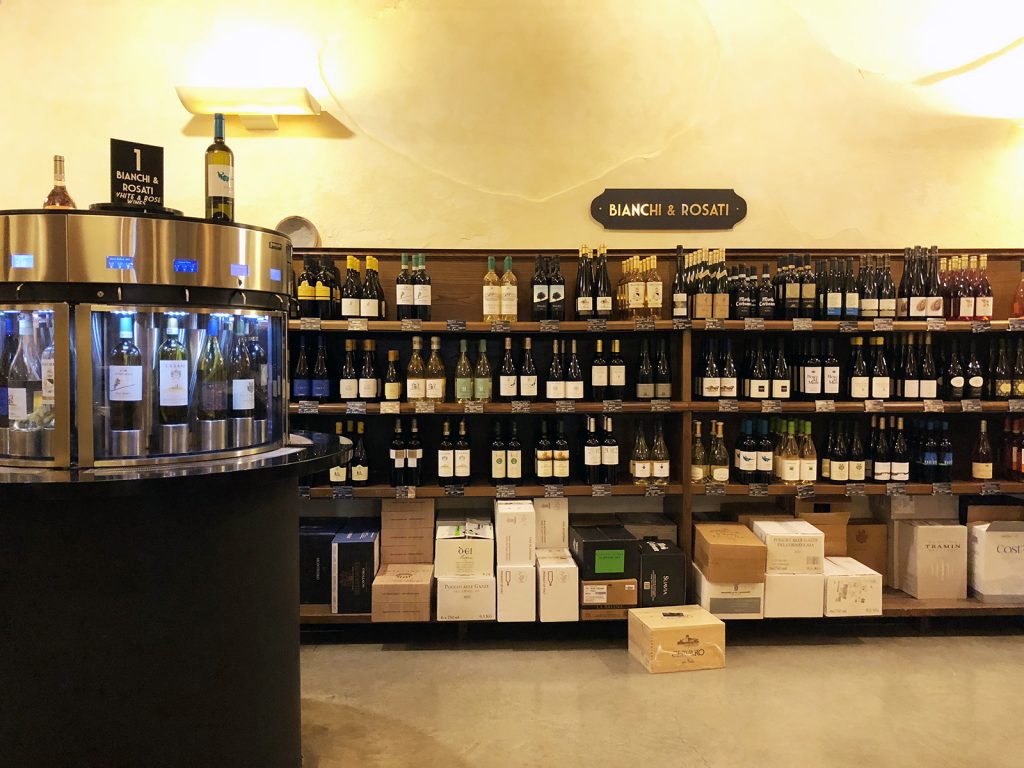
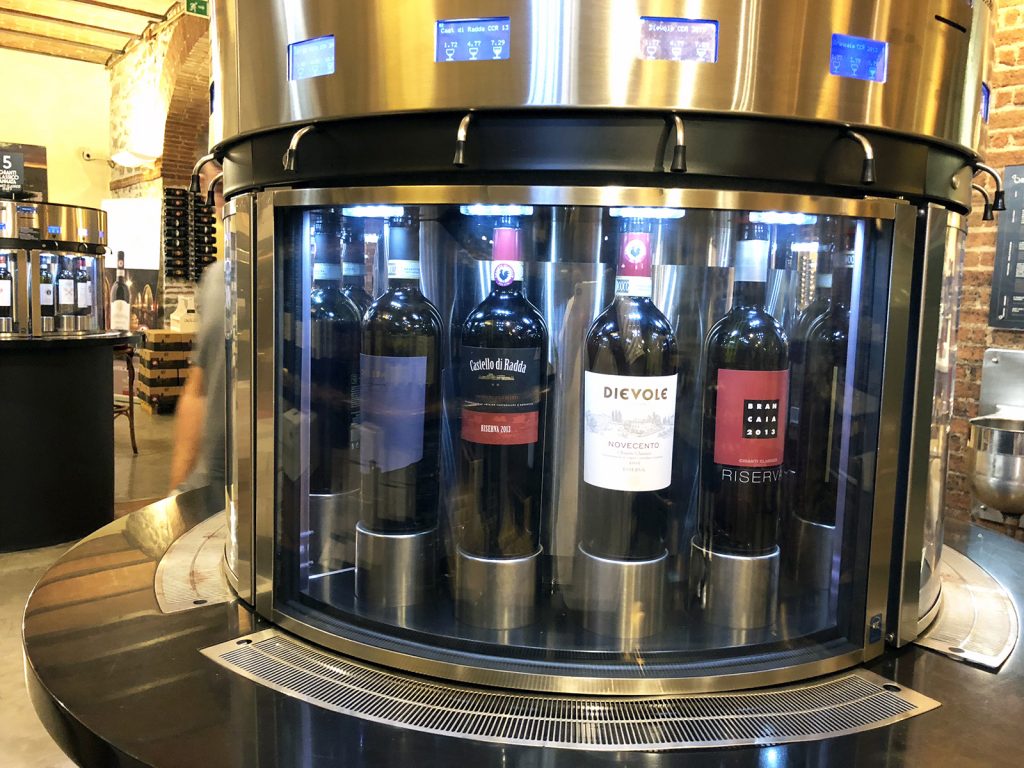
We basically tried to try at least one wine from each of the types they had (everything from whites to rosés to reds to even like scotch, etc.). The Falorni family is a super important family in the region, and they created this tasting experience, as well as a wine museum across the street, which we got a guided tour of and really enjoyed!

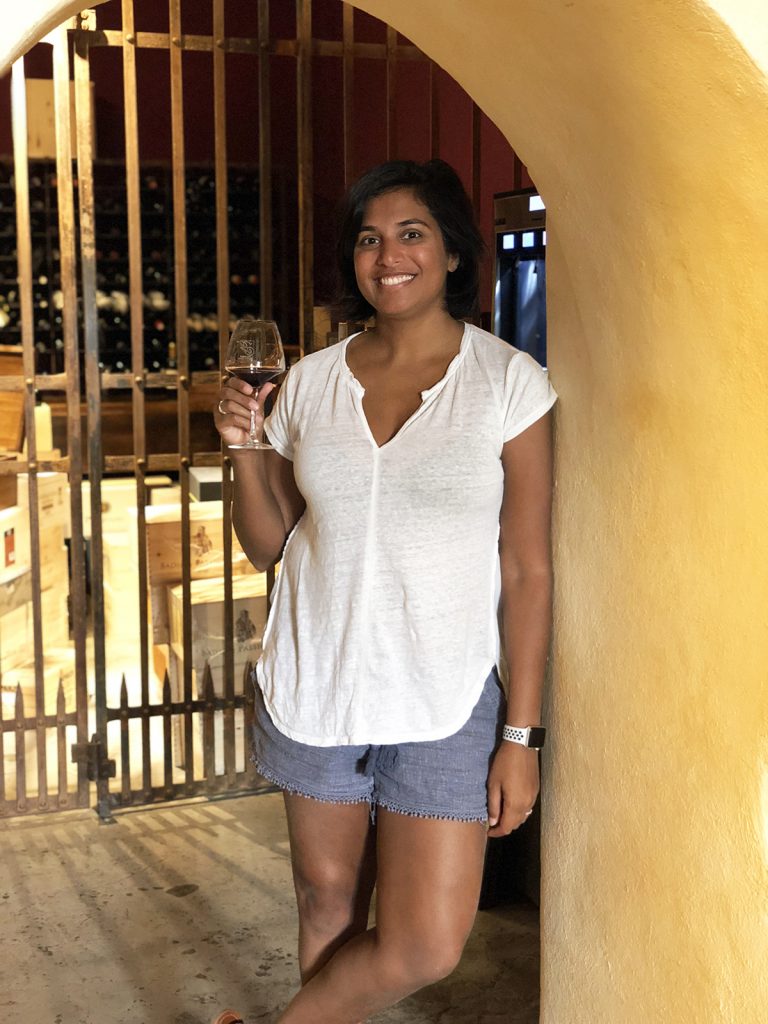
We tried a total of 11 wines here and here’s what I thought:
- Tenuta Fertuna Rosé di Toscana 2017: So delicious! Another rosé that I will be seeking out when we get home.
- Santa Margherita Valdobbiadene Prosecco 2016 ($12): This was dry but good. It got better after each sip.
- Falorni Chianti Classico 2015 ($20): This was made by the famous family I referenced above. It was sour at first but got a little better over time. Still meh on Chianti Classico overall though.
- Castelvecchi Chianti Classico Riserva Lodolaio 2014 ($22): I really liked this one! It had a good smell and a mild, but full taste.
- Ca’di Pesa Chianti Classico 2015 ($30): Another Chianti Classico :/ This one also started sour and stayed sour
- Castillo di Radda Chianti Classico Riserva 2013 ($30): This was an awesome wine! Not sour, with a good full taste and not too strong. I’d look for a bottle of this when we get back.
- Don Tommaso Chianto Classico Gran Selezione 2014 ($36): I liked this one but didn’t love It was a little more sour than the Riservas.
- Tenuta La Novella Pian del Sarti Syrah 2011: This was really sweet, almost like just drinking grape juice. If you like that taste you would love this wine!
- Poliziano Vino Nobile di Montepulciano 2015 ($25): This was very smooth with a good taste. It was Damian’s favorite but I thought it got a little more sour as you drank more of it.
- Poggio Landi Brunello di Montalcino 2012 ($42): This was really good with a mild taste and was my favorite out of all of these!
- Dominique Roy Jacqueline Grand Vin de Bourgogne 2015: This was much sweeter and less full, I thought it was just ok.
Wow, phew, that’s a lot of wineries!
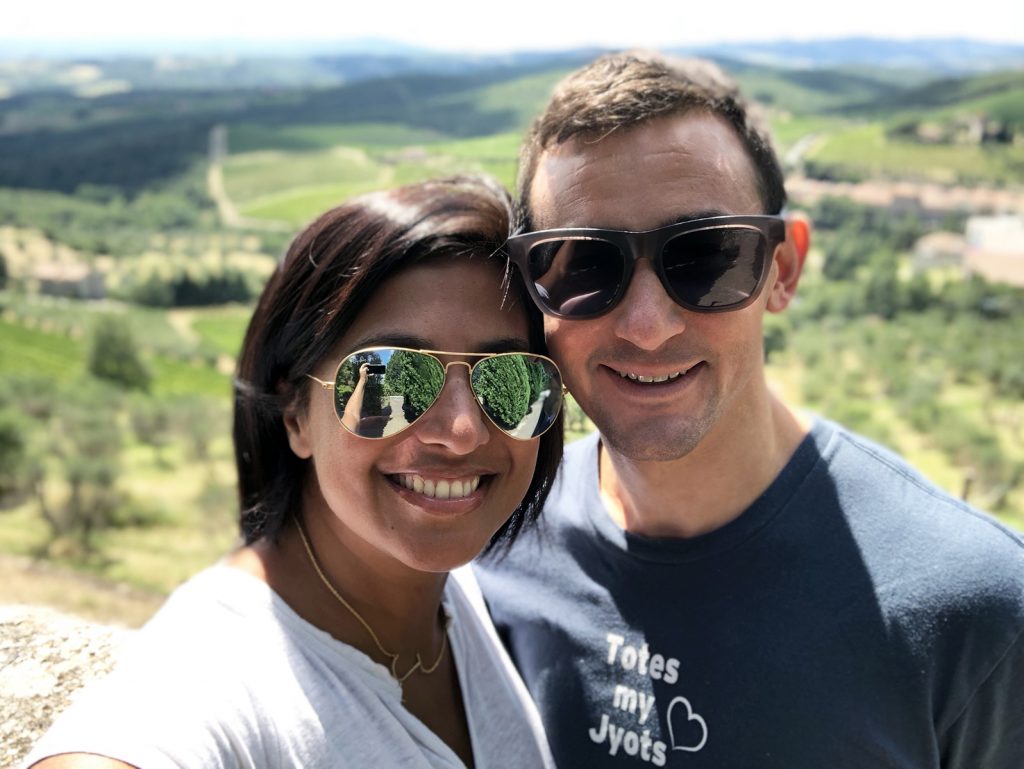
You know, it really is! Granted, this is four days of fun compressed into one post, and we did these four days over the course of a week, but it still was a lot of wine tasting! I really appreciated learning more deeply about wines by visiting all these wineries and am happy to go back to “real life” armed with more knowledge about what I like. And I can’t wait to share about our favorite wine tasting experience at Castiglion del Bosco soon!
————————————————————-
Read more about our time in Italy using the links below:
- Italy Country Recap – What we loved (and didn’t love) in our six weeks there
- Italy – The plan for our six weeks here
- Italy – Visiting Pisa – the Leaning Tower and the Luminara festival
- Italy – Our day in Lucca
- Italy – Life on an agriturismo in Italy Part 1: Montecarlo (Tuscany)
- Italy – Four days in Bologna
- Italy – Life on an agriturismo in Italy Part 2: a vineyard in the Chianti region (Tuscany)
- Italy – Wineries and wine tasting in Chianti (you are here!)
- Italy – One day in Siena!
- Italy – Life on an agriturismo in Italy Part 3: Emilia Romagna
- Italy – Parmigiano Reggiano cheese factory and Balsamic Vinegar producer tours
- Italy – Hiking Cinque Terre
- Italy – Our three days in Florence
- Italy – Brunello wine tasting and visiting thermal baths
- Italy – Our three days in Rome
Related Posts
UNFPA Madagascar fundraiser – please give!
TLDR: We got to see first-hand some of the amazing work UNFPA Madagascar is…
July 12, 2018A stunning Cape Town day: Cape of Good Hope, Cape Point, Boulders Beach and Chapman’s Peak Drive!
Ok, so I know I’m a bit all over the place here, writing our…
July 12, 2018


Leave A Comment